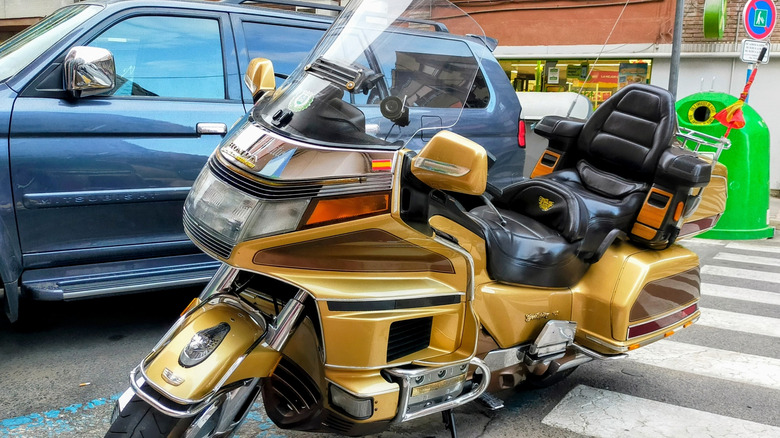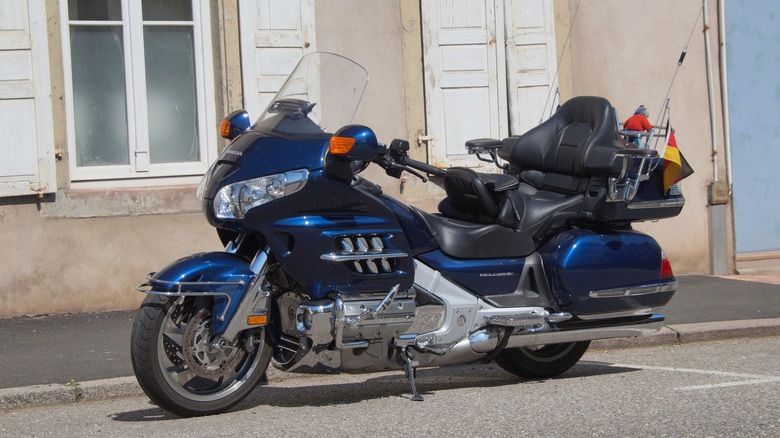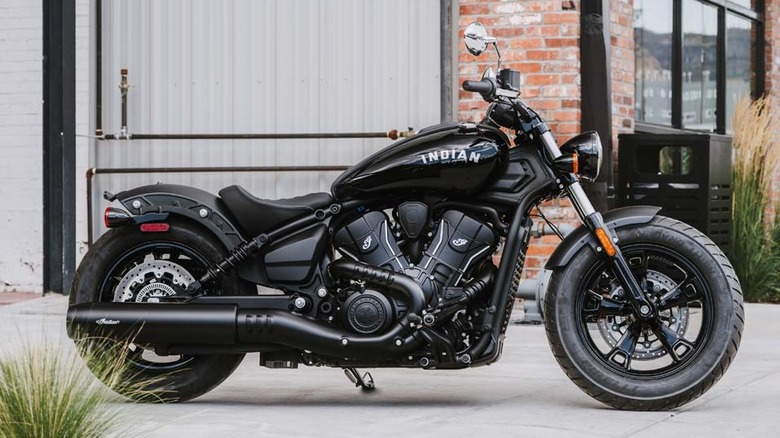What's Considered High Mileage For A Cruiser Motorcycle?
If you ask a garage full of motorcyclists what they consider "high mileage" you'll get a mix of shrugs, doomsday prophecies, and wildly wishful thinking. Some bikers will tell you a cruiser is practically finished at 20,000 miles, while others point proudly to their old Harley that's approaching the 100,000 mile mark. Harley-Davidson motorcycles are regarded as "high mileage" at anywhere from 30,000 to 100,000 miles depending on model, although there's some consistency among each type of bike. With four-wheeled vehicles 100,000 and 200,000 miles are typically points where resale value plummets and buyers tend to take extra care. As for motorcycles, J.D. Power says 3,000 miles a year is a reasonable amount of use for a motorcycle and most cruisers shouldn't be considered "high mileage" until 40 or 50,000 miles.
Other experts echo this or come close with their assessments. The consensus is that while sport bikes and the best dual-sport motorcycles can start looking worn at 25,000 miles, cruisers like the 2025 Honda Gold Wing can make it a bit further. Some insurers put the line at 45,000 miles for cruiser bikes, with rates for coverage changing as a bike passes that mark. As we mentioned, there are almost as many opinions about what's considered "high mileage" than there are bikers in the world. Some owners claim that their bikes topped 100,000 miles without issues, and others will tell you that going beyond 50,000 without a major overhaul is asking for trouble.
The design of a cruiser favors a long life
Cruisers are built to provide a mix of comfort, low-end torque, and durability. This means the engine, drivetrain, steering, and suspension are much less stressed compared to sport bikes that scream around curves at 12,000 RPM and a 45º angle to the road. A cruiser moseys down the highway barely breaking a sweat, which can make mileage without context a poor indicator of condition. It's hard to resist putting some faith in an odometer reading when it's often one of the only verifiable facts about a used vehicle, though. Don't necessarily be put off by a high odometer reading. Motorcycles — particularly cruisers — often age like well-kept leather boots: worn in but not worn out.
Despite this, the human tendency to attach significance to round numbers has made 40,000 to 50,000 miles a common beacon for the point at which a cruiser becomes 'high mileage.' It's also why motorcycles in general (not just cruisers) below 10,000 miles are generally considered 'low mileage.'
It's not that engines suddenly implode at 40,001, 50,001 miles, or any other pre-determinable figure; this informal standard is mostly a shorthand used by dealers, insurers, and cautious buyers. In fact, Ohioan Phil Steiner managed 700,000 miles on the original engine of his 2015 Honda Gold Wing, and Wisconsonite Allan Zahrt put over a million miles on his 1975 model although he replaced the engine three times.
Most searchers will carefully inspect a prospective purchase with over 40,000 miles even if it looks great. Motorcycle parts wear out over time, and knowing that a bike has seen heavy use can make buyers uncertain. What some don't realize is that an owner's behavior has a big impact on a bike's useful lifespan.
Maintenance and riding style matter more than odometer readings
Cruisers with large-displacement V-twins are engineered to run at lower rpms than other types of motorcycles and can take you beyond 100,000 miles if serviced properly. Any bike will last longer if things like oil changes, valve service, and chassis lubrication are done on schedule. That's why whether buying a high-mileage motorcycle is a good idea depends mostly on how well it was cared for.
Mileage then becomes less of a hard red flag and more a warning to scour the paperwork. Has the bike missed scheduled maintenance or had any major repairs? Has the final drive been serviced and were all replacement parts used of OEM quality? The answers to these questions matter far more than the odometer reading, and how a motorcycle was ridden will have a huge effect on its longevity as well. A bike that cruised 100,000 miles on highways will be in better shape than one that spent its life in stop-and-go traffic or dusty fields. Engines last longest when they're run low and slow, and this suits most cruiser bike riders just fine.
Ultimately, the number chosen as the threshold for 'high mileage' is more about psychology than engineering. Yes, between 40,000 and 50,000 miles is where cruisers get labeled as such, but that stamp shouldn't doom a bike. It's a starting point, not a brick wall. For riders willing to look beyond the odometer reading and make a thorough examination, these so-called 'high-milers' can be incredible bargains.


